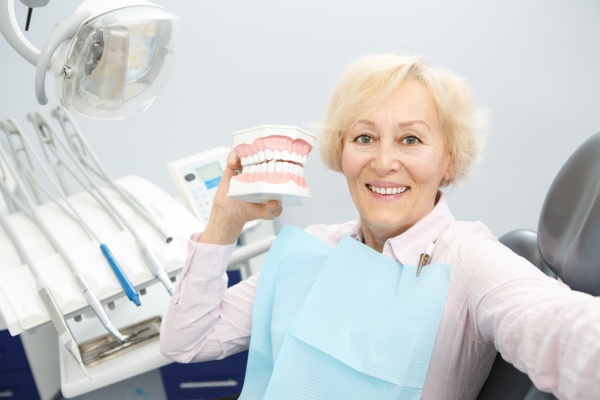When Are Dental Onlays or Inlays Recommended?

Dental onlays and inlays are necessary to remedy damaged rear teeth that are not in bad enough shape to need a crown. These oral health restorations are primarily used to correct fractured, cracked or decayed teeth when the damage is mild or moderate. In certain instances, inlays or onlays can function in place of a cavity filling.
Learn More About Dental Onlays
Dental Onlays and Inlays Protect Your Teeth and Rebuild Your Smile
When you meet with your dentist to discuss your oral health and smile, the dentist might recommend the use of inlays/onlays. These dental restorations rejuvenate smiles and safeguard teeth. Also known as partial crowns, this type of restorative dentistry is perfect for those seeking to remedy a certain type of damage to the teeth. Inlays are the perfect alternative for conventional metal fillings.
Onlays repair even harsher damage inflicted on teeth. After repairing the damage, your smile will look gorgeous. There is no need to bother with over-the-counter teeth whitening products when your dentist can beautify your teeth with dental onlays. Porcelain onlays resemble natural teeth to provide a natural appearance.
Dental Inlays and Onlays Extend the Life of Teeth
These dental restorations are ideal for patients in search of a way to prolong the life of their teeth. Onlays and inlays are made with extremely durable materials like porcelain and gold. These materials are meant to last decades or even an entire lifetime. Choosing such durable dental restorations and your teeth will prove resistant to degradation and damage across posterity. The same is not always true of fillings and crowns that will almost certainly need replacement at some point in the future.
Select a Durable Solution for Your Compromised Teeth
Your dentist might suggest dental inlay and onlays correct specific types of damage. Inlays are best suited to remedy cavities and additional damage. Onlays remedy even more extensive damage caused to the cusps of the tooth. Each is cemented to the tooth after the damaged section is taken away and prepped. These dental restorations are cemented directly on the tooth so they serve as a durable solution for compromised teeth.
Once your dental inlay/onlay is in place, you will enjoy a tight seal over the tooth that wards off additional damage, inflammation and infection. Your dental onlay/inlay will prove scratch-resistant as time progresses, providing you with a beautiful smile that looks perfectly natural.
Onlays and Inlays Strengthen Teeth and Eliminate Concerns of Expanded Fillings
Patients who have particularly weak or vulnerable teeth will find inlays are a superior option to metal fillings. Inlays bolster tooth strength while metal fillings have the potential to reduce strength. Enhance your tooth strength with inlays/onlays and your chompers will be that much better protected against additional damage, infection and disease.
Furthermore, inlays and onlays will not expand as time progresses like traditional metal fillings. Expanded fillings can prove painful and possibly even require replacement.
How can you really use this?
For more information or to schedule an appointment with Balmoral Dental Center, request an appointment in our Huntsville dental office here: https://balmoraldentalcenter.com. Or call us at (256) 429-3870.
Related Posts
Dental restoration can be used to rebuild and restore the function of damaged teeth. They can also be used to restore the aesthetics of damaged teeth. Tooth decay is one of the main reasons teeth become damaged, but other factors like trauma to the face or habits like nail biting or teeth grinding can lead…
When your mouth has been worn down due to years of wear and tear, dental restoration can help you get your smile back and improve your oral health. Even if we do not think about it, we rely on our teeth, tongue, gums, jaw, and throat for more than we realize, and keeping all these…
If you have an early-stage cavity or even more serious damage to your tooth, dental restoration options can help you keep your teeth strong and healthy by reinforcing the protective layer of your tooth enamel, helping it rebuild its structural strength over time. While many dental restoration options can be used in conjunction with one another,…
Traditionally, dental restorations require an individual to have a physical impression of their mouth taken. Impressions are necessary to accurately create an indirect dental restoration, which are restoration made outside of the oral cavity and applied at a later time. Dental crowns, veneers, inlays and onlays are all examples of restorations that require impressions in order…


